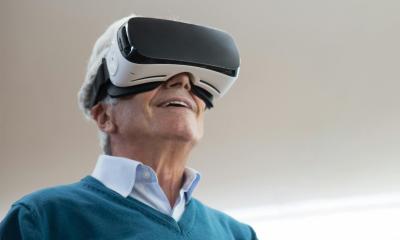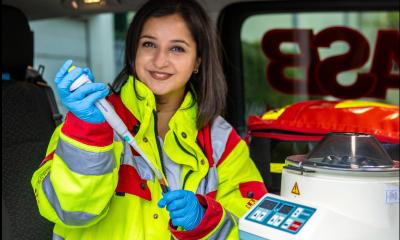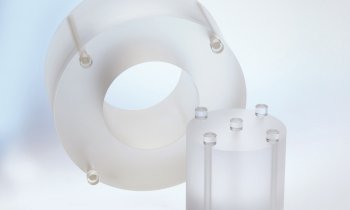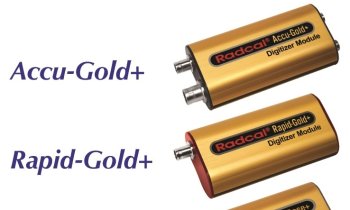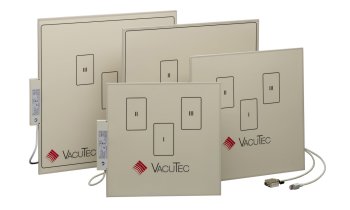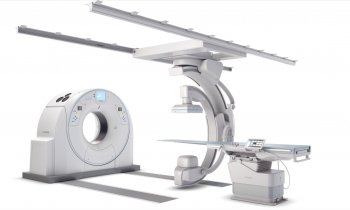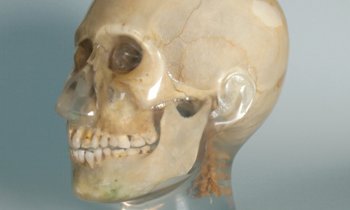
Image credit: Ashley Barnas Larrimore/ University of Delaware
News • Proprioception assessment
Robot testing reveals hidden stroke damage
New study could pave the way for more precise rehabilitation
University of Delaware researchers are working to understand one of the most overlooked challenges in stroke recovery – proprioception, the body's ability to sense movement and position. "To simplify the concept, in class, I tell my undergraduates to close their eyes and touch their nose; if people can't do that, it means they likely have impaired proprioception," said Jennifer Semrau, associate professor of kinesiology and applied physiology, in the College of Health Sciences.
In findings recently published in the journal Neurorehabilitation and Neural Repair, Semrau and doctoral candidate Joanna Hoh suggest it's possible to identify hidden sensory losses after stroke without requiring patients to move their affected arm. This advance could make assessments more accessible in clinical settings.
We found that just 1% of clinicians assess proprioception in people with stroke. It's a newer area, but research also shows that without sensory recovery, a person will not gain full recovery of function after a stroke
Jennifer Semrau
Inside the lab, Semrau uses a KINARM robotic exoskeleton that tracks upper limb movement, allowing her to better understand the neural and behavioral mechanisms that contribute to recovery of sensory and motor function in stroke survivors.
Semrau's lab used several tests, including a new one – the single-arm measurement- to gauge perception-based movement. The test moves a patient's stroke-affected arm robotically while they respond with their non-affected arm if they can feel the movement of their stroke-affected arm. "We're trying to determine the lowest level someone can detect their arm moving," Semrau said.
The average person, who hasn't had a stroke, can feel as little movement as a half centimeter. For people post-stroke, it varies. "Some can't tell their arm was moved 10 centimeters, and that could be the difference between touching a hot stove or a knife in the kitchen," Semrau said.
The communication from the brain to the receptors in the muscles, which are responsible for detecting movement, is disrupted after a stroke. "When you move, the receptors lengthen or shorten, and if the information isn't getting from the brain to those muscle receptors, you can't properly coordinate movement," Semrau said. However, someone with a proprioceptive deficit could still feel pain and may not have a touch impairment. "Pain is part of the somatosensory system and is relayed on a different set of nerves. After a stroke, some may have increased or decreased sensitivity to pain, and it's the same with touch," Semrau said. "Every person is a fingerprint--impairments each person has after a stroke are unique and require individualized treatment."
The difficulty Semrau faces: it's challenging to tease apart sensory deficits from motor deficits because they're deeply intertwined. "It's hard to determine whether the issue is the person's ability to feel the arm or their ability to move," she said. "The tasks we're studying in our lab get to the heart of the matter."
Hoh, an occupational therapist, became interested in upper-limb stroke research after working with patients in rehabilitation. "We often think about movement through motor function," said Hoh. "I had a blind spot to the sensory system in terms of stroke recovery and realized this is an avenue we don't consider enough as clinicians." That inspired her to pursue her doctorate in biomechanics and movement science at UD. Her dissertation focuses on individuals with sensory issues following a stroke and how these issues affect their daily activity levels.
Semrau hopes their ongoing research will raise awareness of the problem and encourage more clinicians to integrate this kind of precision testing. "In one of our studies, we found that just 1% of clinicians assess proprioception in people with stroke," Semrau said. "It's a newer area, but research also shows that without sensory recovery, a person will not gain full recovery of function after a stroke."
To develop a personalized medicine approach to treatment, both Semrau and Hoh emphasized the need for a better understanding of post-stroke impairments. "The onus is on clinicians and researchers to ensure they're testing for sensory deficits. Just because someone is impaired motorically, it doesn't mean they will or won't be impaired sensory-wise," Hoh said. Semrau added, "Understanding the connection between motor and sensory impairments that affect function is key to better targeting therapies and tailoring recovery for each individual."
Source: University of Delaware
20.11.2025



